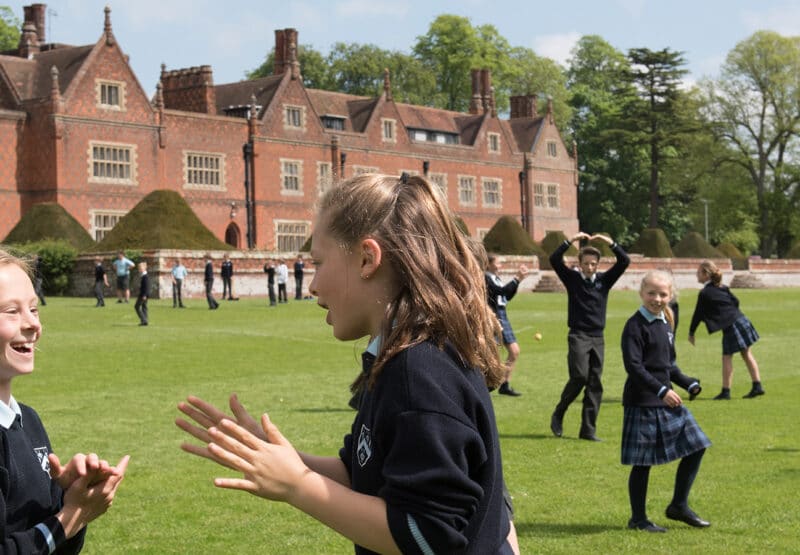When the UK Government instructed schools to put in place a strict testing regime for pupils returning to their classrooms, Senior Deputy Head, Susan Wessels, wasted no time in putting together a rigorous plan for ensuring every pupil returned a negative Covid-19 test result before entering the classroom on Monday. We caught up with her to hear how she continues to keep children and staff safe through meticulous organisation and a structure which has ensured everyone is being routinely tested.
At Framlingham College Senior School, the Fowler Pavilion, ordinarily an event space, café and viewing platform for the sports pitches below, has been repurposed as a highly efficient in-house Covid-19 testing facility. All around the modern building are directional signs, taped off walkways and social distancing markers, indicating the new identity of the structure. There is, however, a distinct lack of people or crowds outside the facility. “We’ve put in place a no-queuing system for pupils and staff to get tests. This means everyone has their allocated slot and it means there’s never any crowds of people congregating together in or outside the building. It means it’s all really efficient and has as little impact as possible on classroom time for pupils,” Miss Wessels tells me.
She adds: “We received a fair bit of guidance from the Government. All the staff and volunteers did online training and there is guidance on setting up your centre. So, we very much followed the guidance but made it as ‘Framlingham College’ as possible to make it as positive an experience as it possibly can be for pupils. We recognised that it’s quite a daunting thing to have a test. We’ve tried to make it private and personal and to make sure the pupils feel at ease. That’s the crucial thing for us really.”
Inside the centre, the process of testing is clearly running like a well-oiled machine. I’m welcomed by a volunteer at the reception desk to register my details before being ushered onward by further volunteers, when it’s my turn to enter my own individual testing booth. In the private booth, from behind the Perspex screen, a volunteer instructs me exactly what I need to do and when I’ll receive my results. After swabbing the back of my throat and up my nose, I hand back the swab and am invited to leave through a different exit, out into the fresh air, five minutes after I arrived.
Miss Wessels says: “The key thing we did was to use the weekend to test every child. This is the game-changer I think. We knew that every single pupil was negative before they stepped into their classroom on Monday. Then we started the second round of testing. We haven’t staggered our return to school as we used the weekend to test to ensure we could get all the pupils back in safely on Monday.
“I wanted to try to prevent anyone needing to isolate. Boarders for example were tested before entering their boarding houses.”
Miss Wessels assures me that while the tests are not compulsory, uptake has been excellent among staff and pupils.
She concludes: “School buildings are made for children, so ensuring pupils could come back in safely, by testing them ahead of returning, was an absolute priority for me.”
More From our Newsletter:
Watch: Pupils and staff return to school with optimism… Full Story
Personal cancer journey inspires OF to launch creative magazine… Full Story
Fire in your belly: Deputy Leader of Liberal Democrat party gives talk to our pupils about the need for more women in politics… Full Story
Spanish pupils learn the value of languages for careers first-hand through guest speaker… Full Story
Our pupils celebrate reading in all forms by stepping into a world of adventure for World Book Day… Full Story
On expedition with DofE Ambassadors: We’re ranked as one of the UK’s top schools for Duke of Edinburgh awards… Full Story
International Women’s Day 2021: Our teachers tell us their most inspirational women… Full Story







